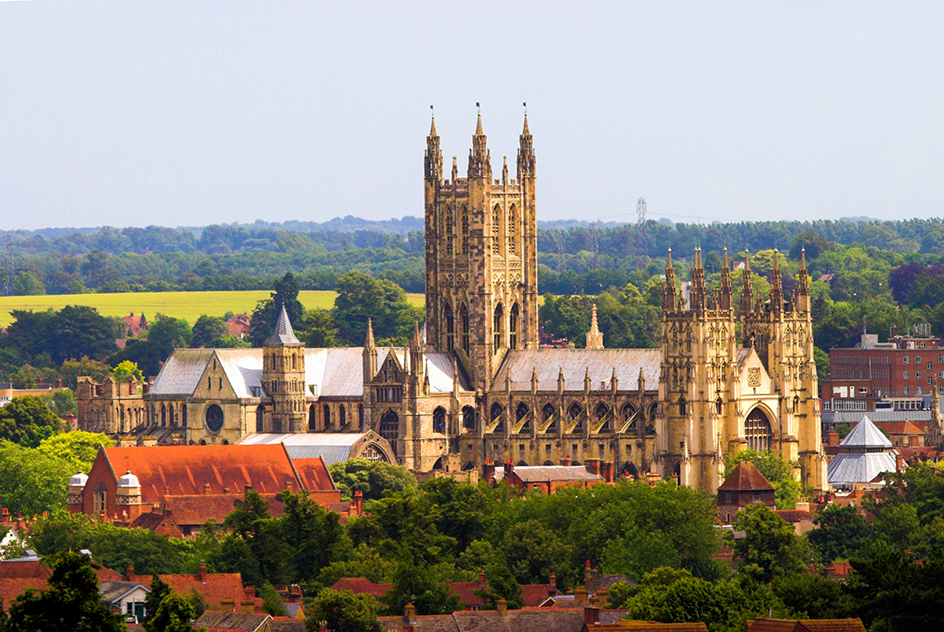Canterbury Cathedral is one of the most beautiful and historic cathedrals in the United Kingdom. Among the oldest and most important Christian structures in England, it stands in the city of Canterbury in southeastern England. The cathedral is the seat of the archbishop of Canterbury, the spiritual head of the Church of England, the official church in England, and head of the worldwide Anglican Communion.

Canterbury Cathedral is famous as the site of the assassination of Saint Thomas Becket in 1170. Becket was archbishop of Canterbury at the time he was murdered. Becket’s tomb quickly became a place of pilgrimage. The English poet Geoffrey Chaucer set his famous Canterbury Tales (about 1386-1400) among a group of pilgrims on their way from London to pray at the saint’s shrine in the cathedral. The Becket shrine was destroyed in 1538 by order of King Henry VIII. A modern memorial to Becket, called the Martyrdom, now marks the site of his murder.
Saint Augustine established the first cathedral at Canterbury in 597 and became the first archbishop of Canterbury in 601. The oldest parts of the present cathedral date from the 1100’s. For a time it was an important monastery. After fire destroyed the eastern end in 1174, that section was rebuilt by William of Sens in an early form of the Gothic style of architecture, using high pointed arches. The western sections were added by William the Englishman in the 1180’s to house the relics of Saint Thomas. The rebuilt church became a masterpiece in the Gothic style. There have been numerous additions since then.
The exterior of the building is dominated by the giant central tower, completed in 1503 and known as the Bell Harry Tower. The tower houses a single bell, called Harry. The tower and bell are named for Henry (Harry) of Eastry, a local religious official who died in 1233. Many tombs of saints and archbishops lie within the cathedral, as does the tomb of the famous English warrior Edward, the Black Prince.
In addition to the architecture, Canterbury Cathedral is known for its beautiful stained glass windows dating from about 1180 to 1220. Some of the windows display incidents from the Bible and the life and death of Becket.
